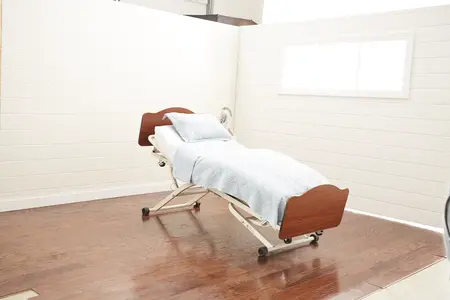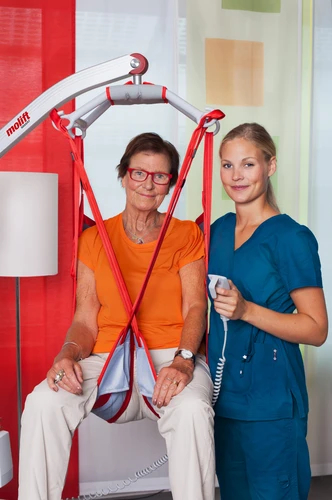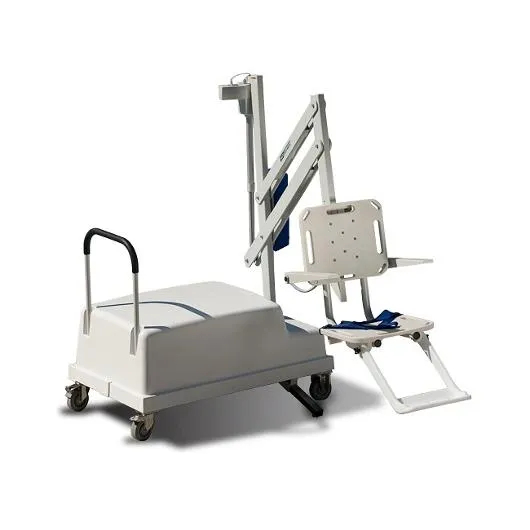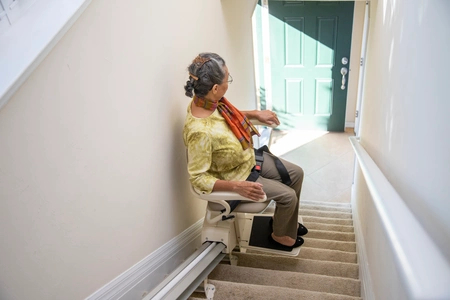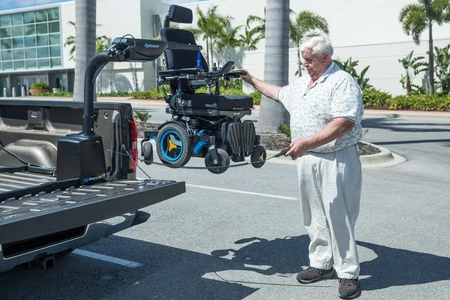Hoyer lifts are a cornerstone in the world of mobility aids, offering individuals facing mobility challenges a
renewed sense of independence and safety. Designed to assist caregivers in transferring patients from one
position to another without strain or injury, these lifts have become indispensable tools in both home and
healthcare settings. Their significance extends beyond mere functionality;
Hoyer lifts embody a bridge to enhanced mobility and independence, enabling users to participate more fully
in daily life.
Types of Hoyer Lifts
Hoyer lifts, a critical component in the world of mobility aids, are designed to provide support and safety
for individuals with mobility challenges, facilitating transfers from one position to another with dignity
and care. Recognizing the diverse needs of users, Hoyer lifts come in various types, each offering specific
features and benefits to accommodate different situations and preferences. From traditional manual models
that rely on caregiver strength, to advanced electric versions that offer convenience at the push of a button,
the range of Hoyer lifts ensures that there is a suitable option for everyone.
These are the traditional models that require manual effort to operate. They are a cost-effective solution
for home use, offering versatility and reliability. The caregiver operates the lift through a hydraulic
mechanism that raises and lowers the patient.
Equipped with rechargeable batteries, electric Hoyer lifts provide ease of use with the push of a button,
making them a favorite in healthcare facilities. They require less physical effort from the caregiver and
offer a smoother experience for the patient.
Designed for individuals on the go, portable Hoyer lifts are lightweight and easy to disassemble, making
them perfect for travel. They ensure that mobility assistance is available wherever the user goes, without
the bulkiness of traditional models.
Standing lifts are specifically designed to assist patients in moving from a seated to a standing position,
facilitating rehabilitation and daily activities. For these types of lifts the Patient must be weight
bearing.
Bariatric lifts cater to individuals with larger body frames, offering reinforced components and higher
weight capacities to ensure safety and comfort.
Benefits of Using a Hoyer Lift
The use of Hoyer lifts brings several benefits, chief among them the enhancement of safety. By mitigating the
risk of injuries associated with manual transfers, caregivers can provide assistance confidently and efficiently.
For individuals with mobility limitations, Hoyer lifts are instrumental in fostering independence, allowing for
transfers with minimal assistance. Furthermore, these devices play a crucial role in minimizing the risk of falls
during transfers, providing peace of mind for both users and caregivers.
Proper Usage and Maintenance of a Hoyer Lift
Using a Hoyer lift requires understanding its parts and operations, and preparing both the equipment and the
patient for use. Floor lifts are mobile and versatile, suited for various transfers, while ceiling lifts use
a track system for more permanent setups. Key components of a Hoyer lift include the sling bar, boom, emergency
release, and hydraulic lift motor, and support base/legs. The lift may be manually operated or powered by
batteries.
How to use a Hoyer lift safely:
-
Prepare the equipment by ensuring it's in good working order and positioned correctly around the
patient's bed, chair or toilet.
-
Inspect the Sling and stitching to make sure there are no tears or loose stitches.
-
Position the sling carefully under the individual, ensuring their comfort and security.
-
Attach the sling to the lift, checking that all connections are secure.
-
Lift the individual smoothly, maintaining reassurance and eye contact.
-
Transfer to the desired location cautiously, using the lift's controls to navigate.
-
Lower and unhook the individual gently, ensuring they are settled comfortably before removing
the sling.
-
Express gratitude and comfort, reinforcing trust and care.
Does a Hoyer Lift Require Maintenance?
Regular maintenance and safety checks are crucial for the Hoyer lift's longevity and safe operation.
Before each use, assess the patient's readiness, ensure the lift's battery is charged, and perform a
thorough check of the lift's components for any signs of wear or damage. The sling should be inspected
for holes or rips and replaced if necessary. Testing the emergency release and ensuring all controls work
properly are important steps in the safety checklist. Always ensure the lift is on stable ground and the
path of transfer is clear of obstructions.
By adhering to these guidelines, caregivers can effectively use Hoyer lifts to provide safe, comfortable, and
dignified care for individuals with mobility limitations.
Frequently Asked Questions on Hoyer Lifts
Can One Person Use a Hoyer Lift?
Yes, one caregiver can use a Hoyer lift with proper training and preparation. The key is to ensure the
caregiver is comfortable with the lift's operation and the patient's specific needs. Single-person operation
might be more common in home settings, where the caregiver has established routines and understands the
patient's mobility limitations. However, it's crucial that the caregiver follows all safety protocols,
including proper sling placement and ensuring the lift is in good working condition before use.
At What Weight Should a Hoyer Lift be Used?
Hoyer lifts are designed to accommodate a wide range of weights, supporting up to 700 pounds, depending on
the model. The manufacturer's guidelines will specify the maximum weight capacity for each lift. It's
important to choose a lift that can safely support the weight of the patient to avoid any risk of injury
to both the patient and the caregiver.
What is the 35 Pound Rule?
The 35-pound rule is a guideline suggested by healthcare safety organizations, indicating that caregivers
should not manually lift more than 35 pounds to prevent injuries. This rule underscores the importance of
using mechanical aids like Hoyer lifts for transferring patients, particularly in healthcare settings, to
reduce the risk of musculoskeletal injuries among caregivers.
Are 2 People Required to Operate a Hoyer Lift?
While Hoyer lifts can often be operated by one person, especially in home care settings, having two people
can enhance safety during transfers, particularly in healthcare facilities or for patients with severe
mobility limitations. The second person can assist by guiding the patient, ensuring comfort, and stabilizing
the lift during operation. The need for a second person often depends on the patient's condition and the
complexity of the transfer.
Is There an Alternative to a Hoyer Lift?
Alternatives to Hoyer lifts include transfer boards, sit-to-stand lifts, and ceiling lifts. Transfer boards
are simple devices that help slide a patient from one surface to another. Sit-to-stand lifts are specialized
for patients who have some weight-bearing capacity but need assistance standing up. Ceiling lifts, installed
permanently in a room, offer a space-saving solution for patient transfers. Each alternative serves different
needs and may be suitable depending on the patient's mobility level and the physical environment.
How to Determine What Type of Sling is Needed for a Patient?
Choosing the right type of sling is critical for the safe and comfortable use of a Hoyer lift. The choice
depends on the patient's mobility level, the type of transfers needed, and specific physical considerations
such as weight and sensitivity areas. U-slings are versatile for general transfers, while full-body slings
offer more support for patients with very limited mobility. Specialized slings, like those designed for
toileting, provide access without needing to move the patient from the sling after transfer. It's important
to assess the patient's needs carefully and consult with a healthcare professional if unsure.
Final Thoughts
Selecting the appropriate Hoyer lift and sling type is essential in promoting a safer, more independent
lifestyle for individuals with mobility issues. These devices play a crucial role in enhancing the quality
of life for patients by ensuring their transfers are safe, dignified, and comfortable. For caregivers,
understanding the operation, maintenance, and proper use of Hoyer lifts is vital in providing the best care
possible.
SpinLife offers a wide range of
Hoyer lifts and slings, designed to meet various needs and preferences. Explore our selection and find the
perfect solution to enhance mobility and independence for you, your loved one, or patient.



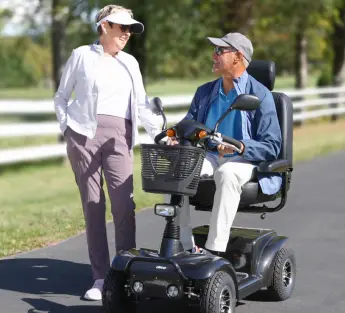

 Contact Us
Contact Us
 M-F 9am - 6pm ET
M-F 9am - 6pm ET
 Request parts
Request parts Request Service
Request Service

